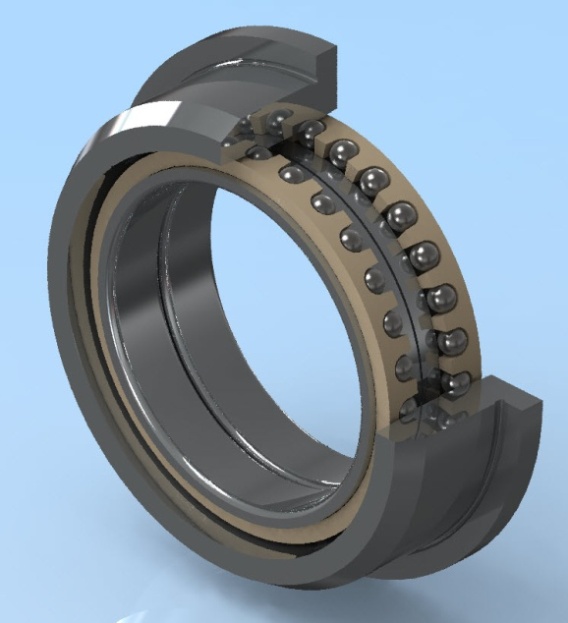Welcome to the final section of our FAQ on thin section bearings, catch-up with previous installments here:

How do you store thin section bearings?
Bearings should be kept in the packaging until they are to be installed.
Where should thin section bearings be assembled?
Precision thin section ball bearings should be assembled at a clean work station. Tools and mating components should also be clean and free of burrs, dirt, chips, etc.
Do thin section bearings require an special installation tools or techniques?
Great care must be taken with interference fits to avoid damaging the bearing. Thermal fitting can be used to minimize installation forces. Press tools should contact the ring that is being pressed for 360 degrees. Never transmit forces thru the balls to the rings. Push on the face of the ring that has the interference fit. Finally, always observe the match marks when mounting duplex bearings to ensure proper orientation.
What types of applications use thin section bearings?
Thin section ball bearings were developed for applications where space limitations are of the utmost importance. As the name implies, the difference between the inside and outside diameters of the rings has been minimized or thinned out. This requires the use of smaller balls due to the reduced cross section. This comes at a price by compromising load capacities. However, these bearings can still accommodate moderate radial thrust or combined loads.
What are examples of applications using thin section bearings?
Thin section bearings are used in many industries including aerospace, medical imaging, robotics, semiconductor, data storage, machine tools and packaging equipment, covering many different applications. Some interesting and diverse applications include:
- Thin section ball bearings are often used where wiring or tubing is passing thru the bore in a hollow shaft or other arrangement.
- Thin section ball bearings are also used in mechanisms such as Gimbal platforms, used in optical and targeting systems on ships and aircraft. Gimbals are also used in radar and satellite communications equipment, land, sea, and air-based.
- Thin section ball bearings also find excellent applications in all types of work holding devices such as turntables, indexing and rotary tables.
- They are also the perfect solution for smooth action in articulating parts such as in the elbows of robotics arms or other articulating joints.
Because there are so many issues to consider when specifying any particular type of thin section bearing, it pays to discuss the application with your bearing supplier to ensure the correct match for a perfect application fit. If you have questions about thin section bearings – or any bearing products – our engineers and bearing experts are ready to help, contact them here.

